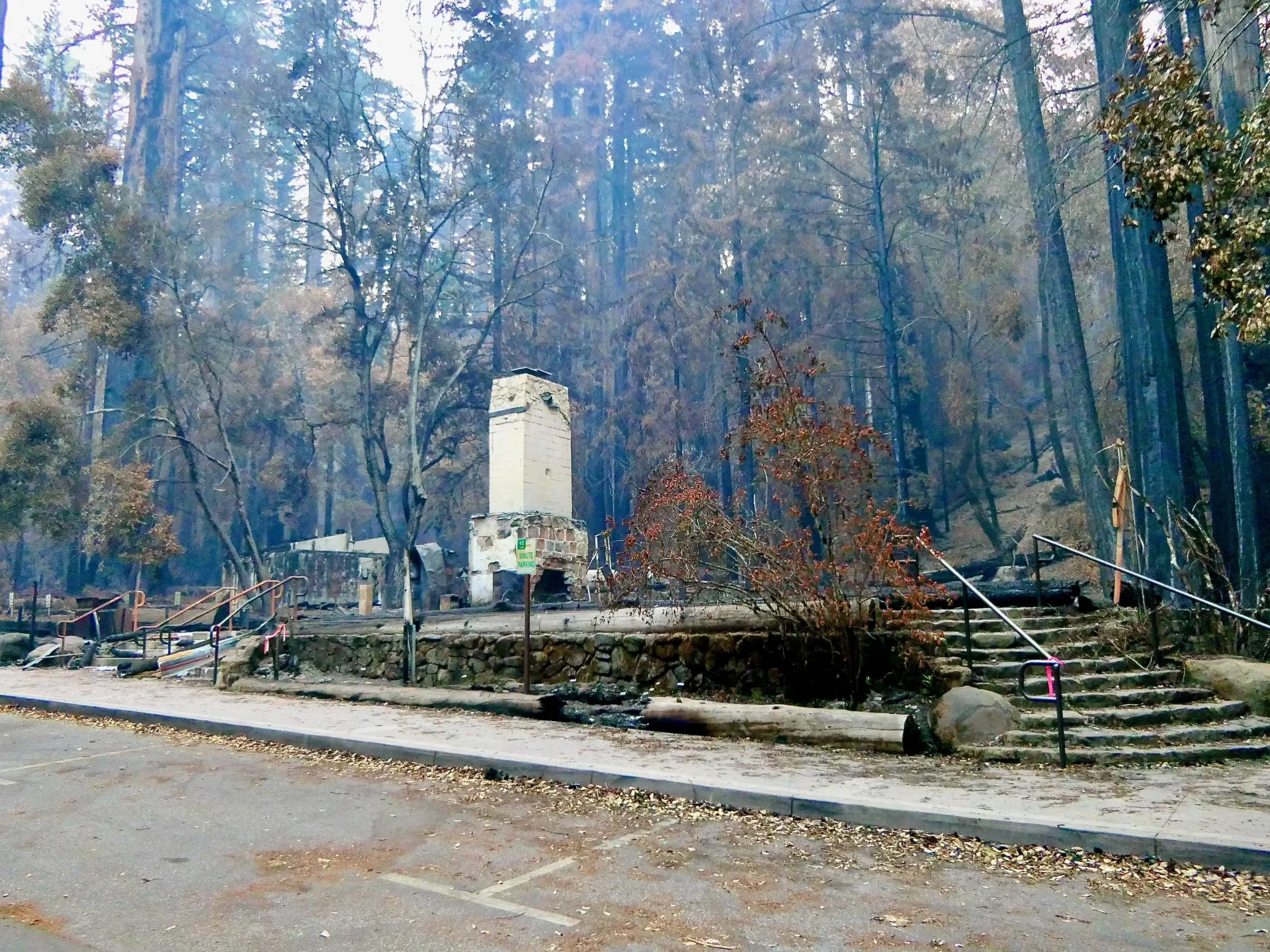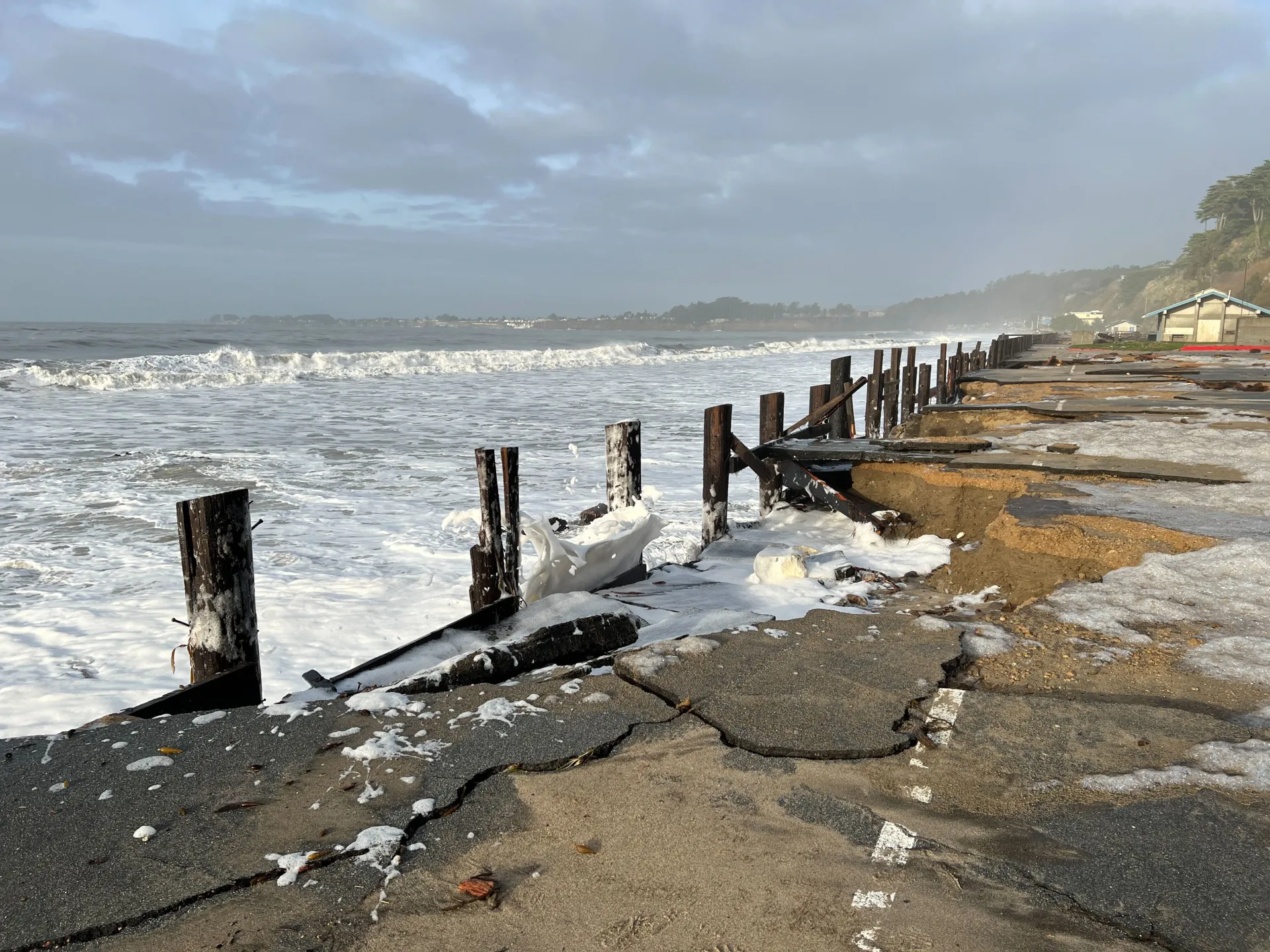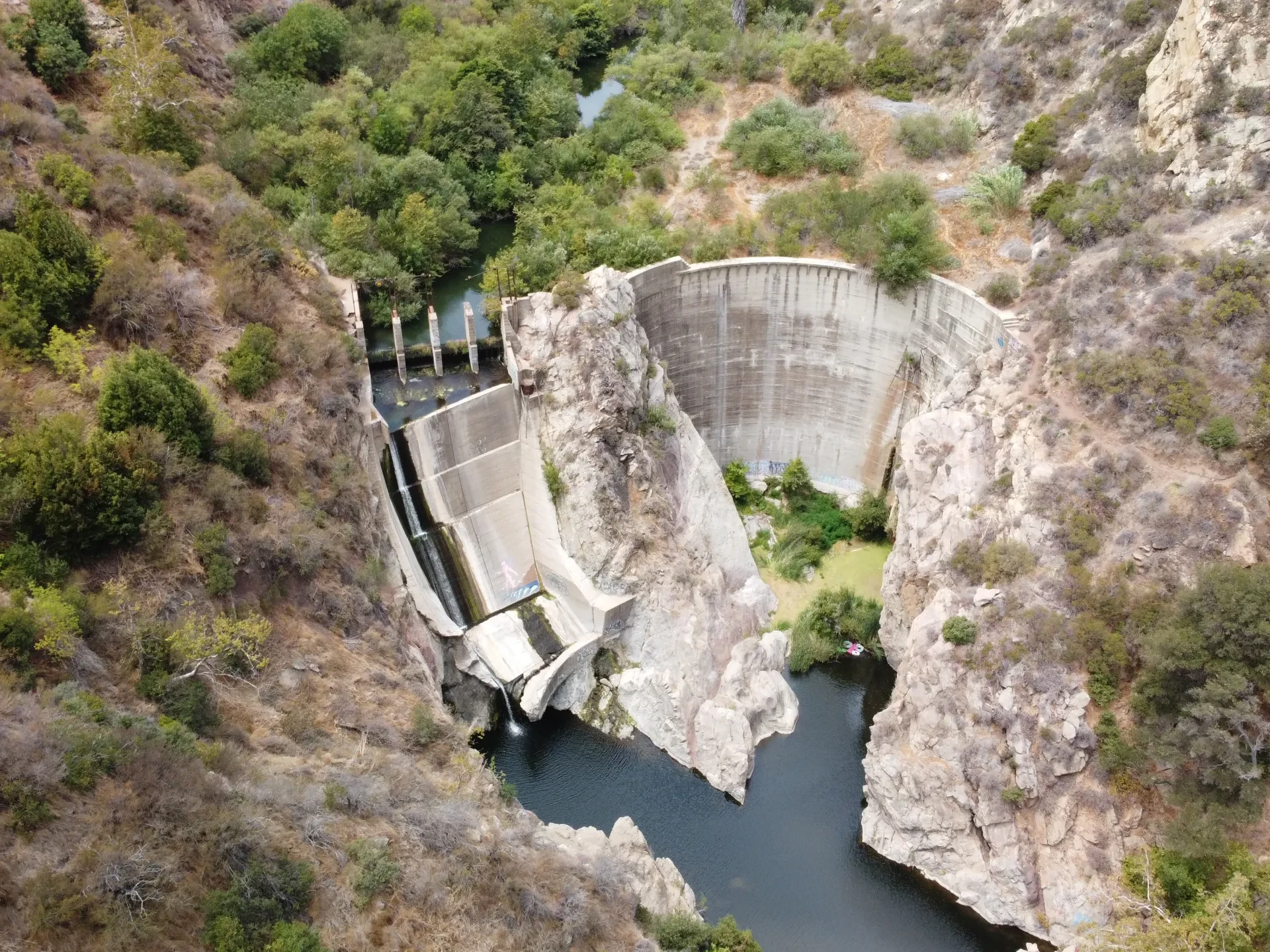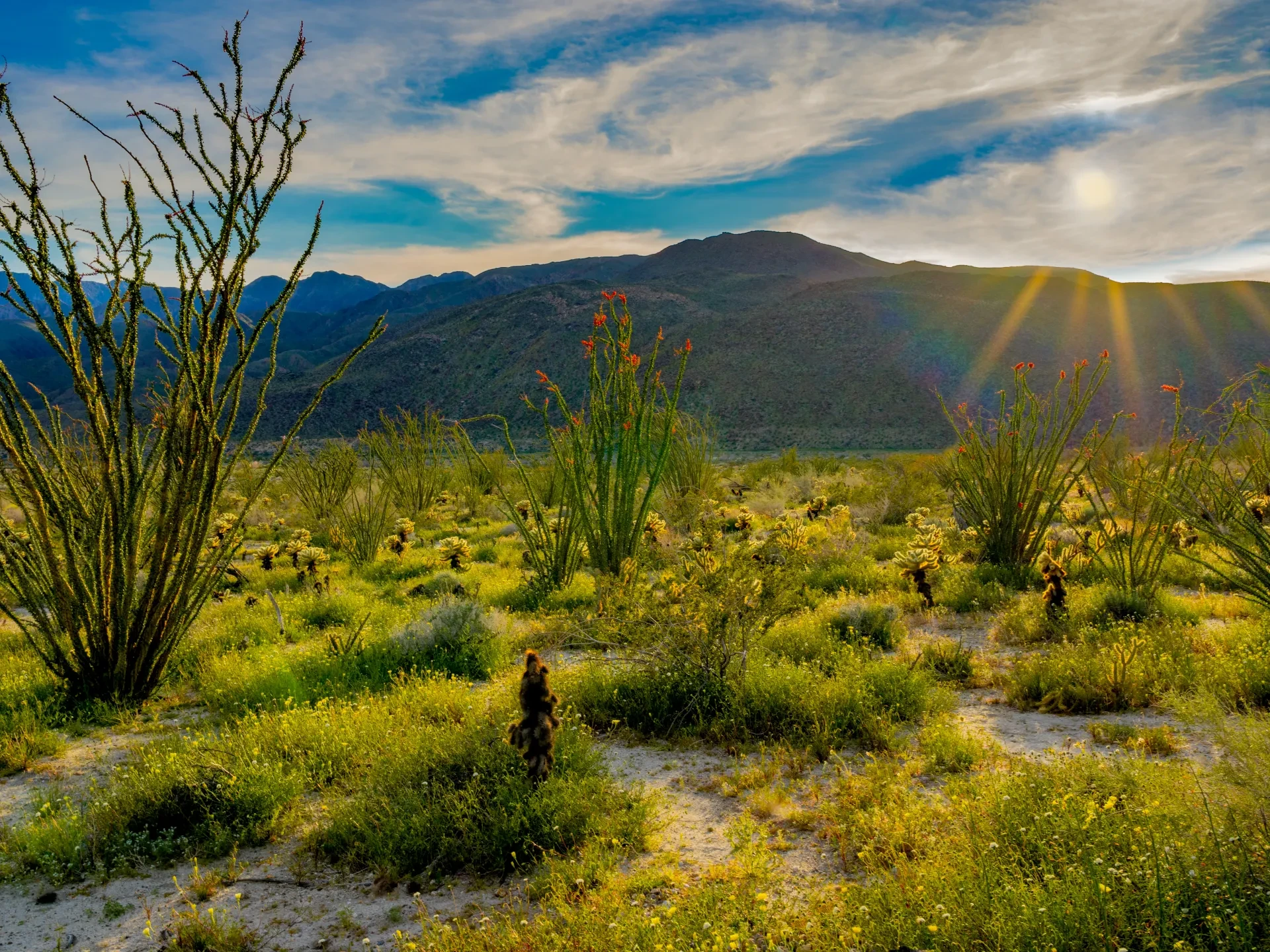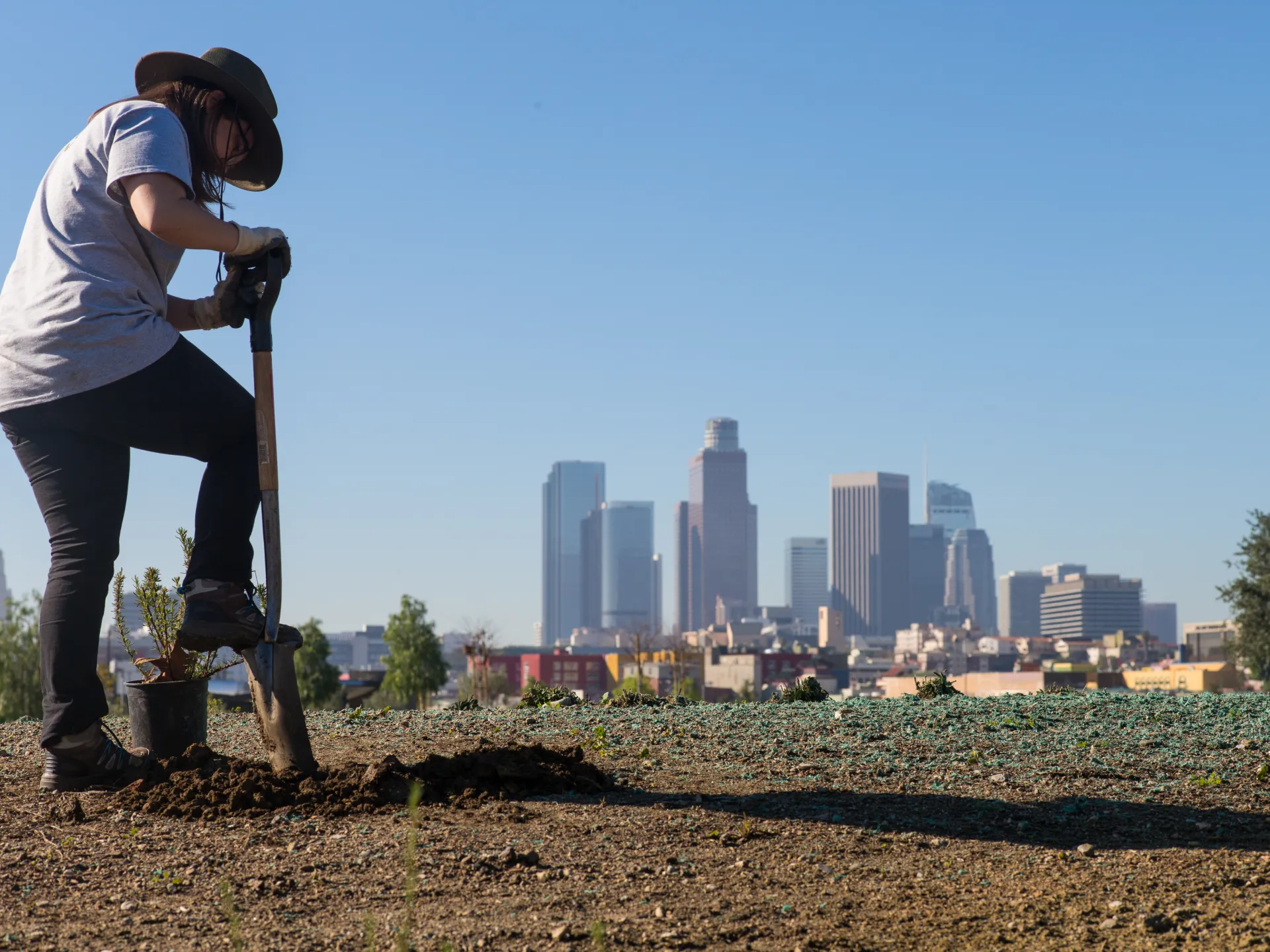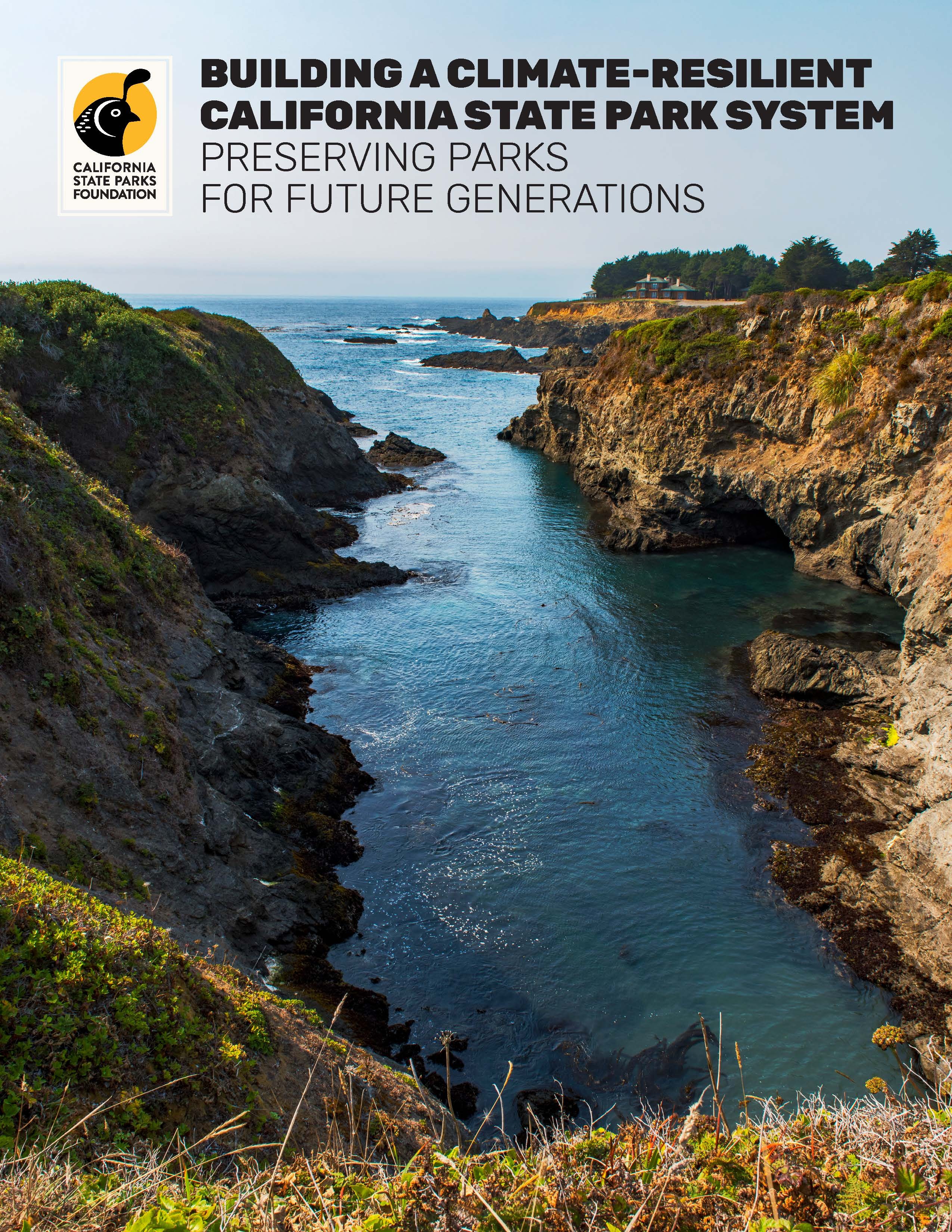Climate change is the defining issue of our time, and immediate action is essential to protect California’s state parks from this growing threat. State parks are an essential part of California’s historical and cultural identity, celebrated for their dramatic landscapes, remarkable wildlife, and exciting outdoor adventures. However, vulnerable parks are already experiencing the devastating consequences of climate change. Ancient sequoia groves are burning in more severe wildfires, coastal parks are being eroded by rising sea levels and intensifying storms, and endangered species that call state parks home are losing their vital habitat. This unprecedented threat requires a bold response and the reexamination of major concepts — what is a climate-resilient state park and how do we create a climate-resilient state park system?
To tackle this critical question, California State Parks Foundation is leading the way with a first-of-its-kind report, “Building a Climate-Resilient State Park System: Preserving Parks for Future Generations.” This document details a comprehensive view of climate resilience and lays out the path to building a climate-resilient state park system. Climate resilience can no longer be only one component of park management. Instead, we must adopt a multidisciplinary approach that incorporates climate resilience across park divisions, from stewarding nature to expanding clean energy to public outreach. This wide-ranging approach creates parks that protect natural and cultural resources, preserve public access, incorporate resilient infrastructure, minimize their carbon footprint, and more.
Here are some major takeaways from the report:
What is a Climate-Resilient State Park?
A climate-resilient state park can prepare for, adapt to, and recover from climate impacts. This includes protecting natural and cultural resources, preserving park access, building climate-smart infrastructure, and educating Californians about parks and climate change. Climate-resilient parks also use clean energy and climate-smart land management to mitigate greenhouse gas emissions and contribute to statewide carbon neutrality.
What are the Major Climate Threats Facing California State Parks?
The report addresses four primary climate threats — wildfire, sea level rise, biodiversity loss, and extreme heat — and California state parks are already facing the consequences of these impacts of climate change. For example, in 2020, over 97% of Big Basin Redwoods State Park burned during the state’s worst wildfire season in recorded history, and in 2023, severe storms inflicted an estimated $190 million of damage to coastal parks like Seacliff State Beach, suggesting a stark future for coastal parks as sea level rise continues to accelerate. California State Parks is already taking key steps to address these threats, but the pace and scale of work needed requires additional resources for a cohesive, comprehensive approach to increasing parks’ climate resilience.
How Can We Build a Climate-Resilient State Park System to Support a More Climate-Resilient California?
Creating Permanent Climate Resilience Programs — Wildfire and Forest Resilience and Sea Level Rise Adaptation
Permanent climate resilience programs are essential to tackle the growing impacts of climate change and building a climate-resilient state park system. California State Parks has already begun to lay out a path for this work by developing a Sea Level Rise Adaptation Strategy and a Wildfire and Forest Resilience Program. However, these programs are hamstrung by one-time funding and short-term, limited staffing that has prevented their permanent implementation. To enact a comprehensive vision of a climate-resilient state park system, sustained funding and increased hiring authority are essential. With these resources, California State Parks can create permanent climate resilience programs informed by a diverse team of climate experts working across relevant California State Parks divisions.
Ecosystem Restoration and Stewardship to Help Protect and Restore California’s Extraordinary Biodiversity
California State Parks is stewarding parks to be more climate resilient and to support biodiversity. These priorities align with California’s 30x30 initiative and shows that California State Parks can play a key role in California’s biodiversity goals. California is the most biodiverse state in the country, and this diversity is reflected in California’s 280 state parks, which are found in every major ecoregion of the state and protect many rare habitats and threatened and endangered species. Restoring and stewarding parklands is key to building healthy, resilient ecosystems that can adapt to climate disturbances and continue to safeguard the extraordinary biodiversity that makes California so unique. This work includes removing or re-aligning legacy infrastructure that could be damaging the surrounding ecosystem. For example, California State Parks is currently removing Rindge Dam in Malibu Creek State Park to restore access to critical habitat for endangered Southern steelhead trout.
Strategic Land Acquisition to Anticipate Climate Impacts
Land acquisition is important for protecting ecosystems, preserving biodiversity, and increasing access to nature. Creating new parks or adding land to already preserved areas can protect rare habitats, endangered species, and areas with a large degree of biodiversity. Strategic acquisition can also proactively address climate threats. For example, California State Parks can anticipate how habitats may shift due to climate impacts and then acquire land to protect those new areas. California State Parks can also acquire land to maintain access to areas affected by climate change, such as coastal parks where eroding cliffs and disappearing beaches will threaten public access. Furthermore, added lands can create large, continuous areas of habitat that are less susceptible to climate disturbances and increase species’ resilience to climate impacts.
Rethinking Deferred Maintenance Projects
Many parks have deferred maintenance needs, such as crumbling staircases and damaged infrastructure. However, deferred maintenance can no longer mean rebuilding as was, but must anticipate and prepare for future climate threats. For example, staircases that provide coastal access may be undercut by increased coastal erosion from sea level rise. However, if the stairs are simply repaired or rebuilt, they will again be compromised by erosion. To rebuild smartly and ensure continued public access, the placement and design of these points may need to be reconsidered to make them more climate resilient.
Developing California State Parks as Refuges during Extreme Heat Events
Extreme heat is a growing threat to California’s natural resources and residents, and extreme heat events will become more frequent and more severe in the coming decades. These events are already causing increased hospitalizations and deaths — with the most vulnerable communities at the highest risk. As temperatures rise, state parks will become increasingly important climate refuges that can provide water, shade, and other essential resources to Californians escaping extreme heat. Therefore, creating climate-resilient state parks also creates more climate-resilient communities. For example, building and maintaining adequate facilities that use clean energy will allow parks to accommodate more visitors — who will increasing travel to cooler forested and coastal parks to escape the heat — without increasing parks’ carbon footprint. Maintaining park access is also critical; however, extreme wildfires, storms, and other climate events are already causing total park closures that cut off public access to these cooler spaces. Therefore, building accessible, climate-resilient state parks is essential to preserve these important climate refuges for all Californians.
Support California’s Statewide Climate Change Mitigation Efforts
Climate-resilient parks can also help mitigate greenhouse gas emissions to support California’s goal to become carbon neutral by 2045. Transitioning to clean energy, making facilities more energy-efficient, using emission-free vehicles, and installing charging stations for electric vehicles all make parks more climate-resilient and contribute to statewide climate mitigation efforts. Proper land stewardship can also help parks remove and store carbon from the air, a process called sequestration. For example, California’s redwood forests store more carbon per acre than any other forested ecosystem on earth. Therefore, forest restoration and stewardship work — like the Redwoods Rising project to restore 70,000 acres of redwoods forest in Redwood National and State Parks — can help California reach its carbon neutrality goals. Healthy, productive forests also sequester more carbon from the atmosphere and are more wildfire resilient, reducing the risk of large carbon emissions from severe wildfires.
What Actions and Resources are Necessary to build a Climate-Resilient State Park System?
The report makes several policy recommendations to enable this comprehensive vision of a climate-resilient state park system. Here are the key proposals:
-
Prioritize California state parks in the 30x30 initiative for their conservation and stewardship role in preserving California’s extraordinary biodiversity.
-
Fund the full implementation of California State Parks’ Sea Level Rise Adaptation Strategy.
-
Hire permanent climate resilience staff in significant California State Parks departments — including Natural Resources, Cultural Resources, Facilities and Park Maintenance, Strategic Planning and Recreation Services, and Interpretation and Education — to build climate resilience into all aspects of park management.
-
Expand California State Parks’ internal ability to identify climate threats and develop adaptation plans by creating permanent staff positions for structural engineers, landscape architects, engineering geologists, park and recreation specialists, and environmental scientists.
-
Extend funding for California State Parks’ Wildfire and Forest Resilience Program beyond its current 2027–2028 expiration date, including hiring authority for permanent staff positions.
-
Establish a pilot program for California state parks as resilience centers for communities during extreme heat and other climate events.
-
Fund a robust California State Parks acquisition program to proactively address climate change and maintain public access.
Time is running out to prepare and protect our state parks from the impacts of climate change, and California State Parks Foundation will continue to advocate for the necessary resources to build a climate-resilient state park system. This new report is our stake in the ground as we continue to fight to preserve our beloved state parks for generations to come. To learn more, read our full report: Building a Climate-Resilient California State Park System — Preserving Parks for Future Generations. View it at calparks.org/climatereport.
CLICK BELOW TO READ THE FULL REPORT
